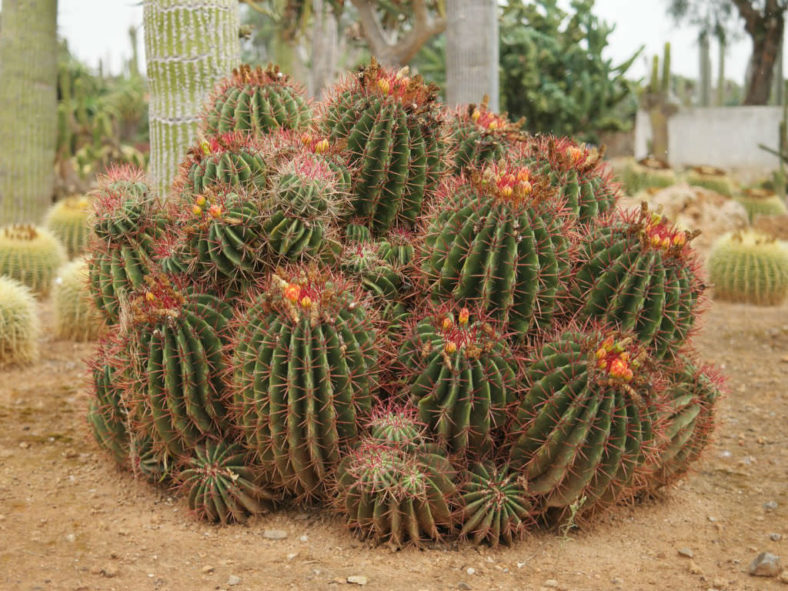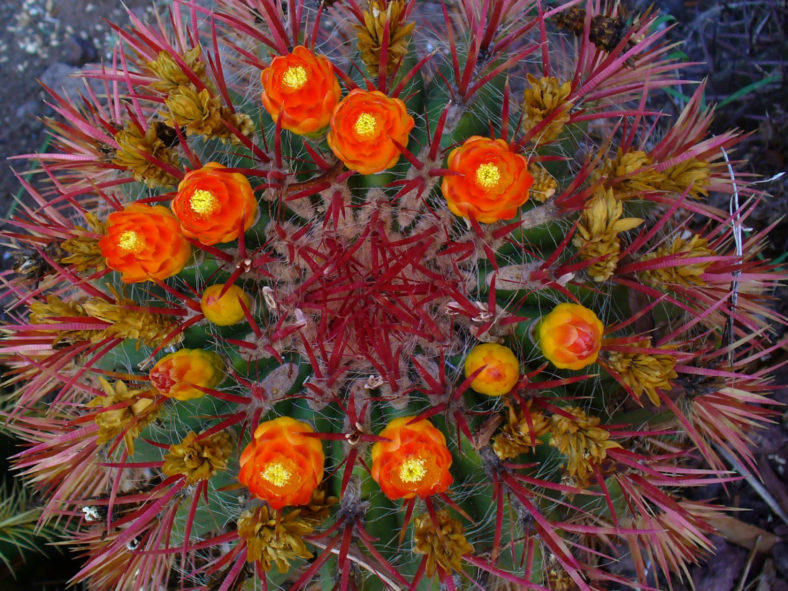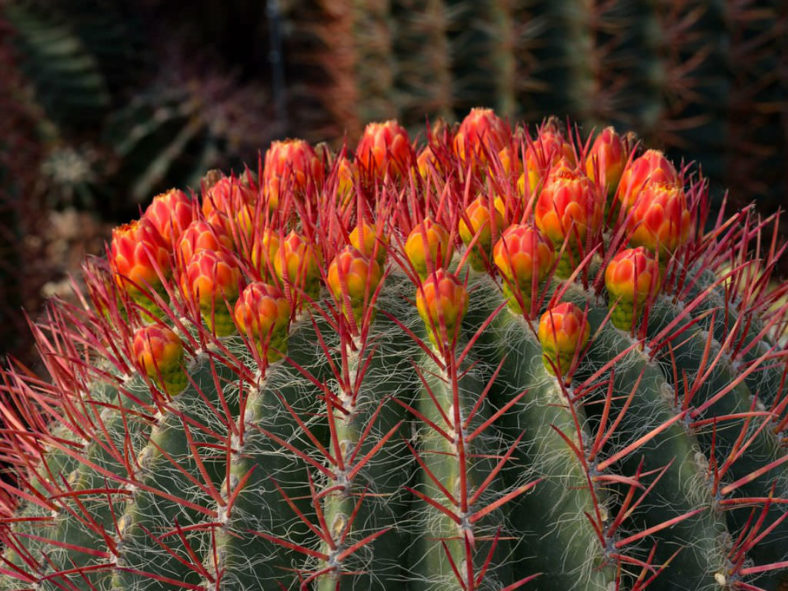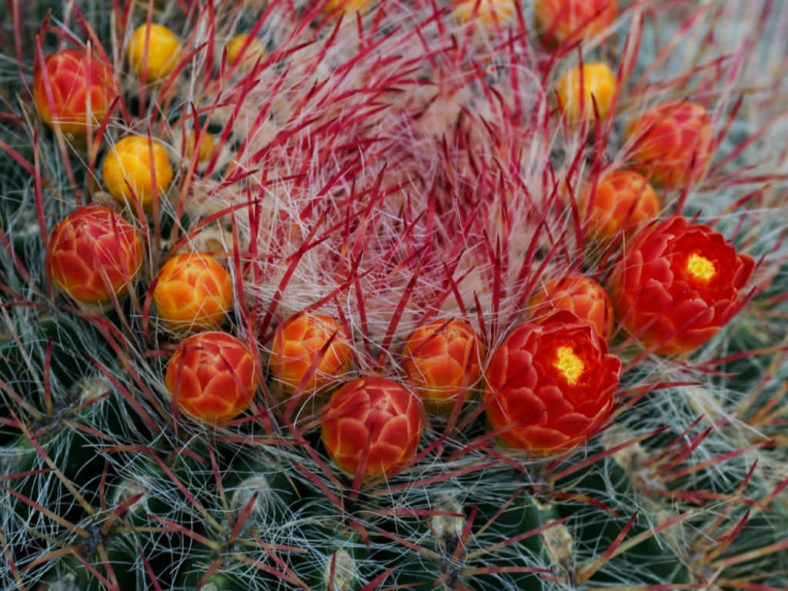Scientific Name
Ferocactus pilosus (Galeotti ex Salm-Dyck) Werderm.
Common Name(s)
Mexican Lime Cactus, Fire Barrel, Mexican Fire Barrel, Mexican Fire Barrel Cactus
Synonym(s)
Echinocactus pilosus, Ferocactus stainesii var. pilosus
Scientific Classification
Family: Cactaceae
Subfamily: Cactoideae
Tribe: Cacteae
Genus: Ferocactus
Origin
Ferocactus pilosus is native to Mexico.
Description
Ferocactus pilosus is a simple or clumping cactus with deep green barrel-shaped to columnar stems with 13 to 20 prominent ribs lined with clusters of spines. It is one of the most spectacular species in the genus. Over time, it can form a group with several subsidiary stems growing from the main one. Each areole bears several bright red straight or slightly curved central spines. The radial spines are often absent or reduced to white hairs.
The flowers are yellow to red and appear from late spring to summer. They can reach up to 1 inch (2.5 cm) in diameter and form a discreet ring at the top of the stems. The fruits are yellow and can grow up to 1.6 inches (4 cm) long.

Hardiness
USDA hardiness zones 9b to 11b: from 25 °F (−3.9 °C) to 50 °F (+10 °C).
How to Grow and Care
Choose a location that receives direct sun during all or most of the day. Plant your Barrel Cactus in early spring before new roots begin to form. The roots may appear dry, which is typical before new growth begins. Dig a hole deep enough for the plant's roots and amend it as needed to provide fast-draining soil. A good soil mixture includes 10 percent native soil, 45 percent washed sand or pumice, and 45 percent compost.
Water the cactus when planting to anchor it into the soil. Water again only if the weather in your area is unseasonably dry and if normal spring or winter rainfall doesn't occur. Ferocactus needs a dormant period with dry soil during the winter.
Learn more at How to Grow and Care for Ferocactus.
Links
- Back to genus Ferocactus
- Succupedia: Browse succulents by Scientific Name, Common Name, Genus, Family, USDA Hardiness Zone, Origin, or cacti by Genus
Photo Gallery
Click on a photo to see a larger version.



